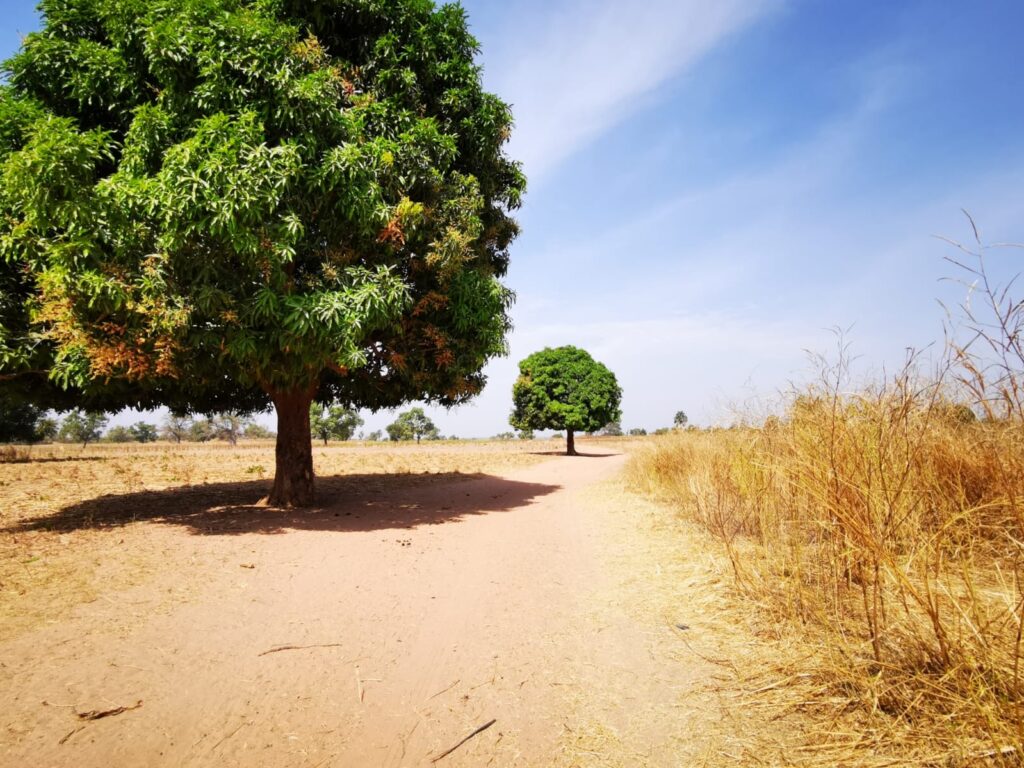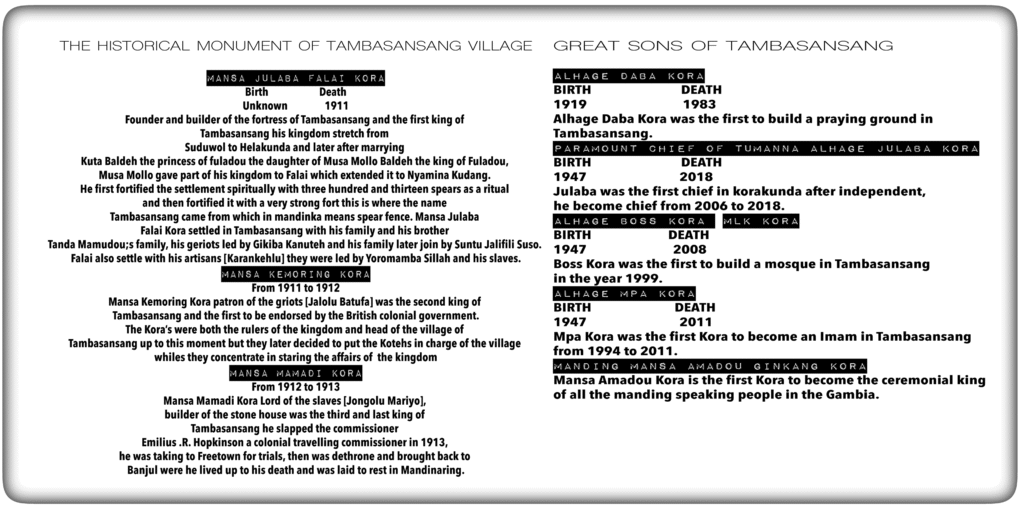
MESSAGE TO THE INDOMITABLE WANJALANKOS
Dear indomitable Wanjalankos of Tambasansang,In the face of defeat to Kundam United FC in the…
Tambasansang Cultural Festival and Circumcision: A Journey Into Manhood
In the heart of Tambasansang, where the echoes of a rich cultural heritage resonate, a…
MUHAMMAD SAWANEH GRADUATES IN NETWORK ASSOCIATION CCNA PROGRAM.
Congratulations to Mr. Muhammad Sawaneh for graduating from Cisco Certified Network Associate CCNA Program at…
AMADOU KORA GRADUATES WITH A BACHELORS IN CIVIL ENGINEERING..
A 26 year old Amadou Kora from Tambasansang, the son of Aminata Amie Kora and…
A GALLANT SOLDIER AND A ROLE MODEL, MUSA K JAWARA.
In the heart of Tambasansang beats the unwavering spirit of a remarkable man, Musa Jawara….
Happy Birthday Mamo!
Happy birthday, Mamo Kora! As the great great grandson of Falai Kora, the illustrious warrior,…
Where they came from
Falai Kora and his family originated from Kong in the Northern part of Ivory Coast, they migrated to the Western part of Mali, to a region called Tanda. Then Bundu, to Simmotto Touba, They moved to Jamudo Kairi then to Sukutoto and finally to modern day Tambasansang.
Tribe or ethnicity.
The main ethnic settlement of Tambasansang is Mandinka with a little splash of some Fulas.
Means of survival.
Almost all the inhabitants of Tambasansang are farmers. We do subsistence farming in order to feed our families. We grow crops such as rice, groundnut, millet of all kinds, cassava, corn and Findi. We also do gardening, hunting, gathering, and fishing.
Some noble surnames in Tambasansang : Kora, Sajaw, Sanuwo, Koteh, Sawaneh, Sighateh, Danso.
Kabilos in Tambasansang:
The Kora Kunda Kabilo
The Karankeh Kunda Kabilo
The Sulaa Kunda Kabilo
The Jali Kunda Kabilo
The Jamankafu Kabilo
